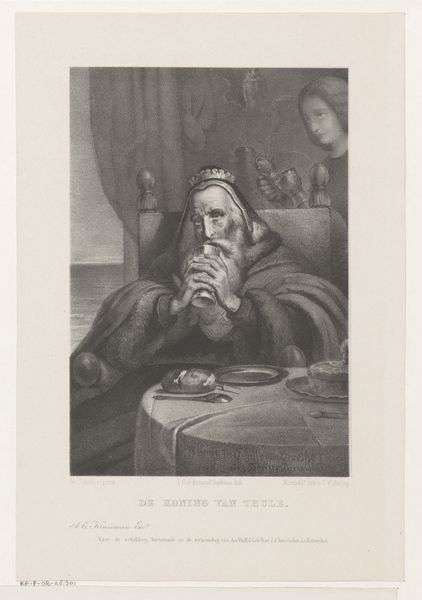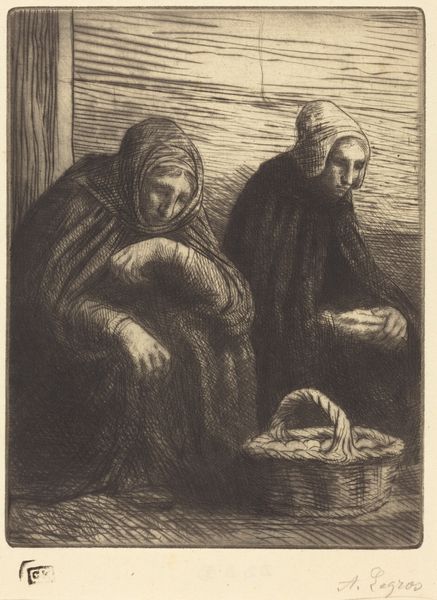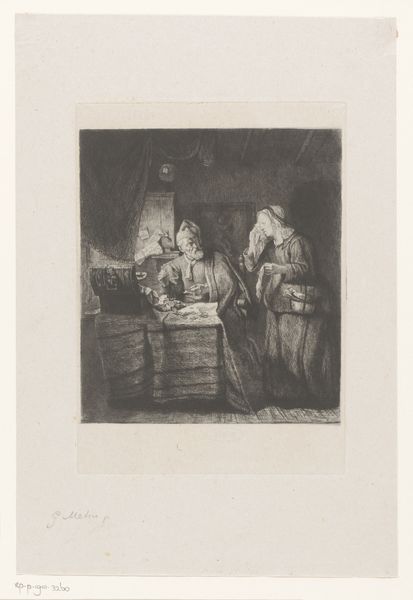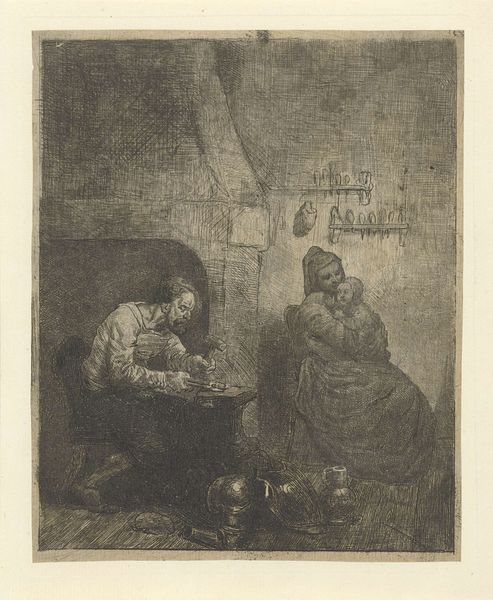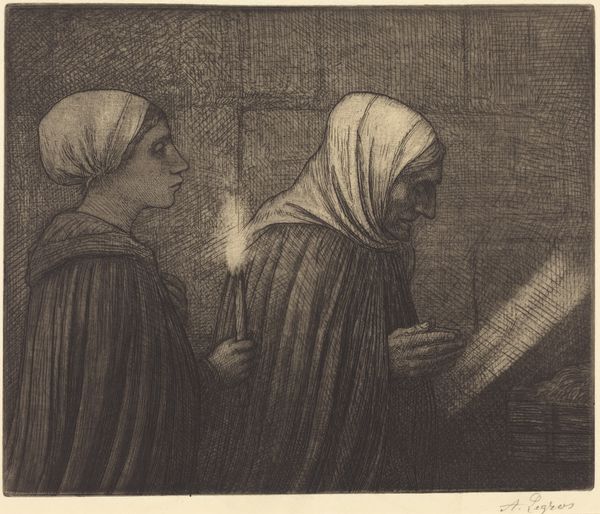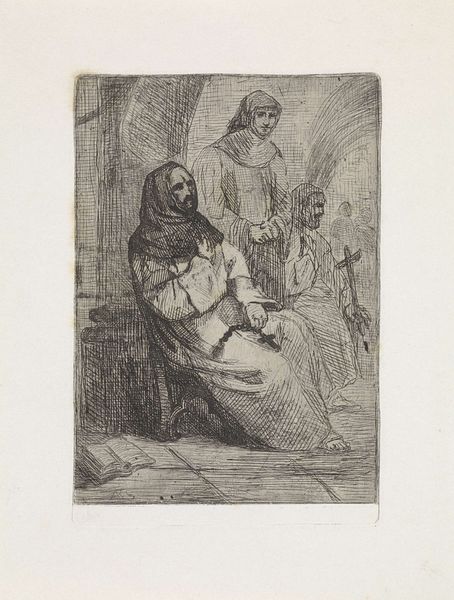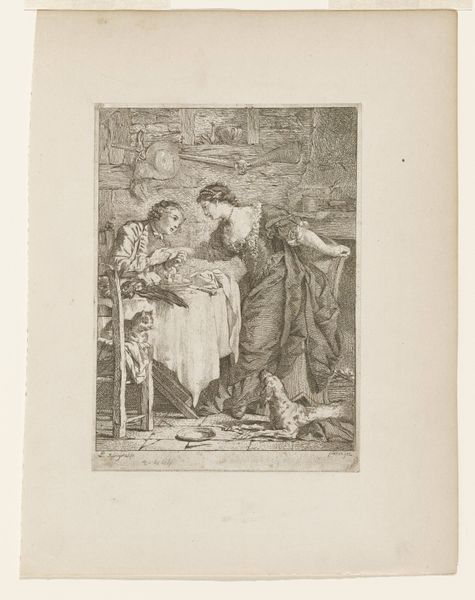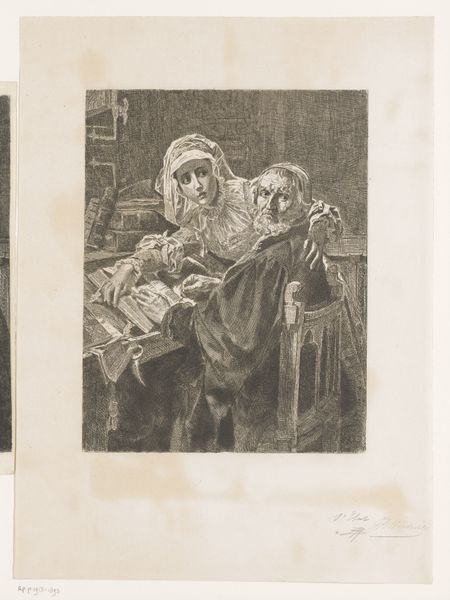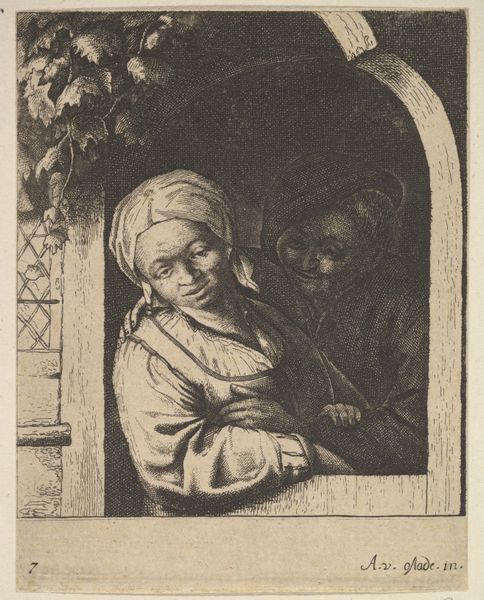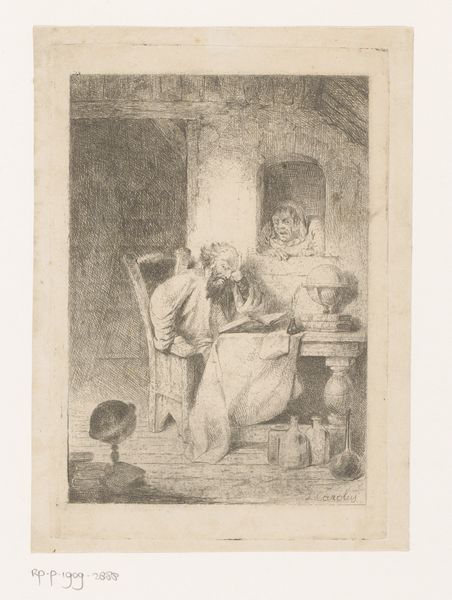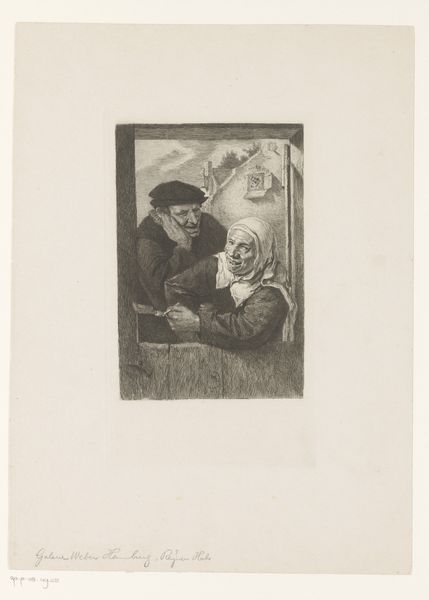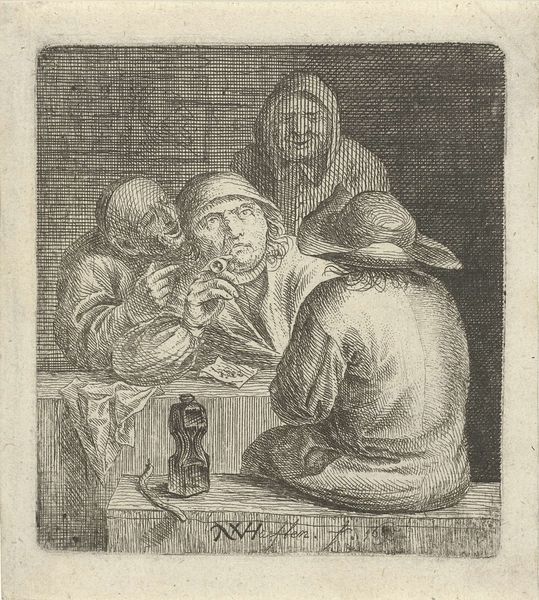
drawing, pencil, graphite
#
portrait
#
pencil drawn
#
drawing
#
book
#
pencil sketch
#
pencil drawing
#
group-portraits
#
pencil
#
symbolism
#
graphite
#
genre-painting
#
academic-art
Dimensions: height 408 mm, width 308 mm
Copyright: Rijks Museum: Open Domain
Editor: This drawing, “Rabbi Elischa” by Alphonse Levy, made in 1897 with pencil, has a somber mood. Two men are engrossed in a book. What do you see in this piece beyond the initial impression? Curator: It’s interesting to consider this work in the context of late 19th-century Europe. How were Jewish identities being represented and consumed? Does this drawing participate in or challenge existing stereotypes? Notice how the artist uses light and shadow – does it create a sense of reverence, or perhaps something else? Editor: That's a great point. I hadn't thought about the role of stereotypes in art during that period. The shading is so detailed. The light makes them appear to be absorbed in something spiritual. What's the significance of the book? Curator: The book is, of course, central. But consider, what are they reading, and within what community or context would this reading take place? Think about literacy, access to texts, and the preservation of knowledge within marginalized communities. The act of reading itself can be an act of resistance. Editor: So, the simple act of reading can carry a larger weight when considering social factors and the identities of the subjects? Curator: Precisely. And how might their dress, beards, and the interior setting play into this representation? L\u00e9vy, although himself Jewish, was working within a visual culture often hostile to Jewish people. So how does this image function as representation? Does it subvert or support popular prejudices? Editor: I didn't think to look at it that way. I guess art isn't just about what's on the surface, but what it communicates about society, power and identity. Thank you. Curator: Exactly! Art is a visual dialogue, and asking the difficult questions is key.
Comments
No comments
Be the first to comment and join the conversation on the ultimate creative platform.

